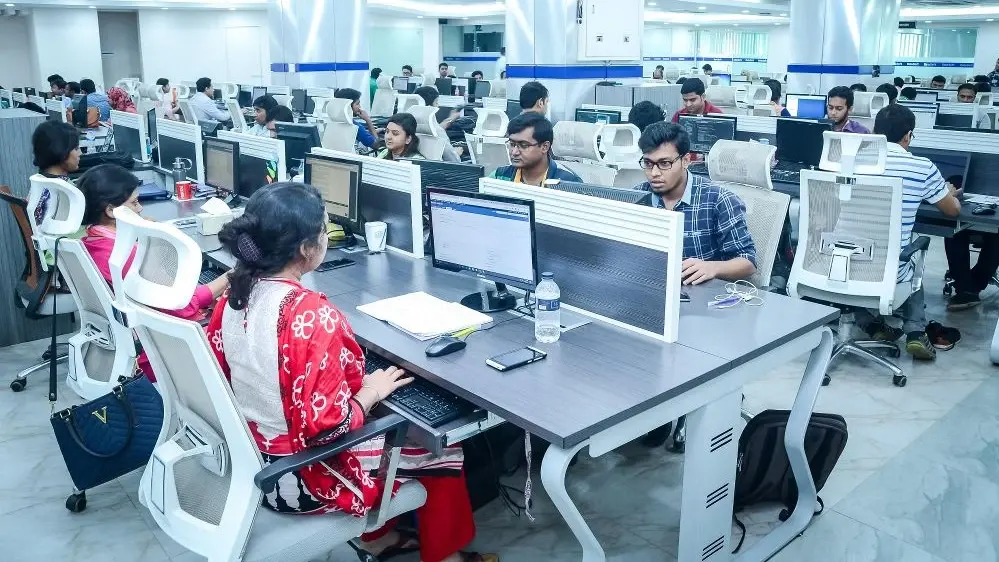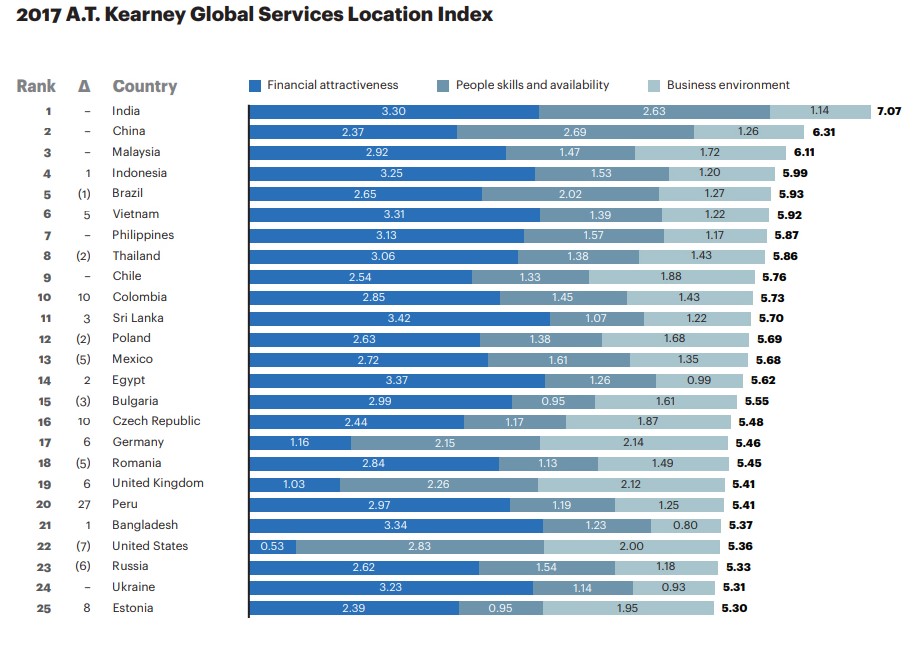GET IN TOUCH
- Please wait...

With more than 43% of its population under the age of 25, Bangladesh is a young country in more ways than one, a major competitive advantage considering that more than half of its population of 160 million are in prime working ages (15-54) [3]. Although the RMG sector remains dominant in the nation’s contribution to GDP and workforce, the ICT sector may soon catch up due to large foreign investments, government incentives, and favorable policies for the industry. Unlike other industries, ICT has the potential to directly impact and transform other markets given the overreaching effects of automation, AI, big data, and advanced analytics is having in other countries throughout the world. The question for Bangladesh, however, remains not whether the country will be able to achieve its goal in 2021 of $5bn in exports [2], but whether this industry may in the future become the nation’s 3rd engine.


According to a McKinsey report, annual global spending on external IT services is about $900bn [9]. Despite the many advantages of Bangladesh, India remains the global giant in IT outsourcing, with the IT export market set at $150bn [8], but tides are changing due to the IT industry’s high turbulence. The growth of the IT export market in India has also been consistently declining from 18.5% in 2011 to 8-10% in 2017. And if there’s one thing to learn from the decline from Bangladesh’s neighbor, it’s that to achieve long-term sustainability, IT outsourcing businesses need to focus more on being a business partner to their clients than a temporary IT provider. This includes developing a shared understanding of business outcomes, long-term relationships, active collaboration on critical IT-architecture decisions, transformation with clear planning and action, and win-win contract mechanisms [9].
Bangladesh has a sizable young workforce and high-cost competitiveness (20-30% less than in India or the Philippines [4]) which is estimated to only strengthen with the completion of IT parks, a major key value proposition for companies looking to outsource or offshore operations. Leading global IT service providers like Wipro, IBM, TCS, NTT Data, Infosys, and WPP have already entered the market through delivery center set-ups and joint ventures with local companies. Despite this, the IT-ITeS industry remains significantly smaller than its main competitors (India & Philippines) and has yet to reach the growth phase in its industry life cycle. However, once it arrives at this destination, we are likely to see greater growth due to favorable government policies and foreign investments (Russia recently invested $100m [10] & Japan also seeking to invest [11]). In essence, Bangladesh is an upcoming hotspot for ICT outsourcing, where its speed to reach that position depends on its ability to develop its talent capital and infrastructure to compete in the global platform.

Technology in the IT sector changes as quickly as people’s need for new clothes, and adequate training is required to keep up with the pace in the industry. This places increasing demands on firms to be adaptable according to the new tried and tested technologies as well as human resources properly equipped with updated skills. Taking a look at A.T. Kearney’s Global Services Location Index, we see that Bangladesh has steadily risen from its place at 26th in 2014 to 22nd in 2016 and 21st in 2017. From a comparison with other countries in the 2017 chart, we see unexpectedly of other countries in the top 25 places, Bangladesh scored lowest in the business environment showing that though many factors contribute to restraining growth in the ICT sector, a single factor makes the country unattractive for offshoring businesses.
Despite the attractive young workforce, government incentives, and cost competitiveness, issues of intellectual property (IP)/data privacy, skilled talent, and lack of infrastructure remain significant challenges for scaling operations in the sector. Bangladesh currently ranks 129 out of 138 countries on WEF’s IP protection index and lacks the capacity to provide high-value work due to a lack of infrastructure and talent. However, both of these are likely to change with changes in legislation, and the setup of IT parks. The government is also offering up to 100% reimbursement for training programs to provide incentives to develop the value of the country’s talent capital in this sector.

The future of the ICT sector in Bangladesh is exceptionally bright in the sense of growth prospects, further enhanced by the government’s initiative of creating a Digital Bangladesh by 2021. In 2018, the fiscal budget for IT development alone was $988m showing commitment to developing this sector. The ICT industry has the potential to transform the business landscape in Bangladesh and possibly become the country’s 3rd engine in the future. It also has the potential to provide jobs for millions, which is critical considering the impacts automation may have on a country heavily dependent on its ability to provide cheap labor. However, to do so, there must be greater investments made in not only developing the talent capital through training programs but also industry-academia collaboration to ensure graduates are ready for entrance into the market. The measure should also be taken to raise the ease of doing business in the country since cost competitiveness alone is not always enough to attract big players to enter the market. It is highly likely that the ICT sector will become Bangladesh’s 3rd engine given its overall high growth and prospects, however, to make this vision a reality it is crucial we overcome the many issues hindering exponential growth.
Mohammed Shehab, Junior Associate at LightCastle Partners, has prepared the write-up. For further clarifications, contact here: [email protected].
[1] ICT export fetches $800m in 2017 – The Daily Star
[2] Bangladesh to get five more hi-tech parks – The Daily Star
[3] South Asia:: Bangladesh The World Factbook – Central Intelligence Agency
[4] Betting on the Future, The Bangladesh IT-ITeS Industry is Poised for Growth – Everest Group
[5] Bangladesh fares well in South Asia ICT adoption – DhakaTribune
[6] ICT opens up new prospects for Bangladesh – The Daily Star
[7] Modernizing the outsourcing business in Bangladesh – The Daily Star
[8] India’s $150 billion outsourcing industry stares at an uncertain future – The Economic Times, India Times
[9] Five ways to unlock win-win value from IT-services sourcing relationships – McKinsey
[10] Russia will invest 100M USD in the Bangladeshi ICT sector – The Daily Star
[11] Japan wants to invest in Bangladesh’s IT sector – The Financial Express
[12] Basis Annual Report 2017 – BASIS
[13] IT and ITES Industry Overview – BASIS
[14] 2017 A.T. Kearney Global Services Location Index – A.T. Kearney
[15] Software & IT Services Catalog 2017 – BASIS
Our experts can help you solve your unique challenges
Stay up-to-date with our Thought Leadership and Insights